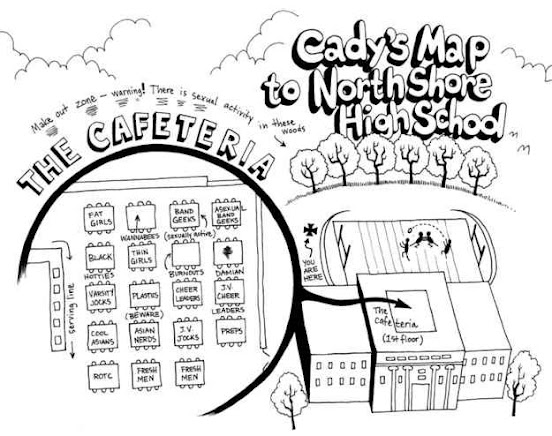Faith (pronounced feyth)
(1)
Confidence or trust in a person, thing, or abstraction.
(2) A
belief based not on proof.
(3)
Belief in God or in the doctrines or teachings of religion.
(4)
Belief in anything, as a code of ethics, standards of merit etc.
(5) A
system of religious belief.
(6) The
obligation of loyalty or fidelity to a person, promise, engagement, etc.
(7) The
observance of this obligation; fidelity to one's promise, oath, allegiance etc.
(8) A
female given name.
(9) As
(usually in) bad faith, insincerity or dishonesty, as (usually in) good faith,
honesty or sincerity, as of intention in business.
10)
Indeed; really (also in the phrases by my faith, in faith) (archaic).
1200-1250: From the Middle English faith, fayth, feith & feyth (also fay, fey, fei (faith) from the Old French fay, fey, fei, feit, & feid (faith), from the Latin fidēs (faith, belief, trust (from which English gained fidelity), from fīdō (trust, confide in), ultimately from the primitive Indo-European bheidth (from bheydth) (to command, persuade, trust (from which English gained bide). The Middle English forms ending in -th are thought perhaps to represent an alteration of the earliest French form feid under influence of other abstract nouns in -th (truth, ruth, health etc) but may have been formed instead from the more usual Old French forms fay, fey, fei etc. with the English suffix added (also due to assimilation to other nouns in -th), thus making the word equivalent to fay + -th. The theological sense dates only from the late fourteenth century although religions had been referred to as faiths since circa 1300. The adjective multifaith (written often now as multi-faith) is a most recent addition.
Before Broken English (1979) changed it all: Marianne Faithfull (1946-2025), Faithless (1978 NEMS Cat: NEL 6012), repackaged re-release of Dreamin' My Dreams (1976).
Doubt (pronounced dout)
(1) To
be uncertain about; consider questionable or unlikely; hesitate to believe.
(2) To
distrust.
(3) To
fear; be apprehensive about (archaic).
(4) A
feeling of uncertainty about the truth, reality, or nature of something.
(5) A
state of affairs such as to occasion uncertainty.
(6) In
philosophy, the methodical device, especially in the writings of Descartes, of
identifying certain knowledge as the residue after rejecting any proposition
which might, however improbably, be false.
(7) In
theology (and, in earlier times, among poets), a technical device for
addressing problems with faith.
1175-1225: From Middle English douten drawn from Anglo-French and Old French douter or doter, derived from Latin dubitāre (to waver, hesitate, be uncertain (frequentative of Old Latin dubāre)). Final Latin form was dubium (plural dubia) and the Old English was doute. Douten entirely replaced the Middle English tweonien (to doubt) which was derived from the Old English twēonian. The Old French doter from the Latin dubitāre reflected how the meaning had changed in Latin; related to dubius (from which English picked up dubious) meant originally "to have to choose between two things." The sense of "fear" developed in Old French and was passed on to English. Meaning "to be uncertain" is attested in English from circa 1300. Related forms are doubtable (adjective), doubtably (adverb), doubter (noun), doubtingly (adverb) and doubtingness (noun). Most popular today is doubtlessly or doubtless. English doubtlessly has tended to the permissive. Where a clause follows doubt in a positive sentence, until well into the twentieth century, it was correct only to use whether but if and that are now acceptable. In negative statements, doubt is followed by that. The old practice of using but (as in “I do not doubt but that she speaks truth”) is wholly redundant.
Faith
and doubt: The four dubia cardinals, the pope and the hint of heresy
On 19 September 2016, a letter from Cardinals Carlo Caffarra (1938-2017), Walter Brandmüller (b 1929), Raymond Burke (b 1948) & Joachim Meisner (1933-2017) was delivered to the pope and the Congregation for the Doctrine of the Faith (the old Holy Office or Inquisition). Technically, the letter was a dubia, a respectful request for clarification regarding about certain established teachings which appeared to be challenged by recent events in or statements from the Holy See (especially Pope Francis' (b 1936; pope since 2013) 2016 post-synodal apostolic exhortation Amoris laetitia (The Joy of Love) concerned with the pastoral care of families). Phrased as five questions, the cardinals asked (1) Whether those living in sin were now to be granted Holy Communion, (2) Whether the Church had overturned Saint John Paul II’s (1920–2005; pope 1978-2005) 1993 encyclical Veritatis splendor (The Splendor of the Truth) which laid down certain fundamentals of the Church's role in moral teaching, (3) Whether there were changes in what constituted certain sins, (4) Whether circumstances or intentions can now transform an act intrinsically evil by virtue of its object into an act subjectively good or defensible as a choice and (5), Whether the church no longer excludes any creative interpretation of the role of conscience and now accepts that conscience can be authorized to permit legitimate exceptions to absolute moral norms that prohibit intrinsically evil acts by virtue of their object? The issues raised were matters of vital interest inside the curia, to theologians and certain other clergy and, though seeming perhaps a little arcane to many, are actually fundamental to the very nature of the Church.
Faith and research: Lindsay Lohan with Qur'an, April 2016.
Of interest too was the structural question: the authority of the pope. The cardinals' view was that a pope's duty is to defend and preserve the doctrines and teachings of the church, these being eternal and unchanging. The alternative view is the pope is the bishop at the head of an absolute theocracy. So, when speaking on matters of doctrine concerning faith or morals to be held by the whole Church, the pope's authority is absolute and he is held to be infallible. Use of this power is called speaking ex cathedra, (the Latin cathedra and sedes translate as "chair", a historic symbol from Antiquity for a teacher and one preserved in academia for the office of professor, and the "see" of a bishopric. The significance of ex cathedra (from the chair) is that a pope occupies the "chair of Peter" (the "Holy See") by virtue of being the successor of Peter himself. Saint Peter being held to be, ex-officio, the spokesman of Christ (and therefore, as the "Vicar of Christ on Earth" speaking the words of God) and every pope since has fulfilled this role), a matter long assumed even before it was declared at the First Vatican Council (Vatican I;1869-1870). Although invoked formally only once since, papal infallibility remains as a pope's thermo-nuclear option in these matters.
The dispute
remains afoot because Pope Francis neither acknowledged nor replied to the
cardinals' respectful dubia. Less deferential was another letter delivered
some months later in which several dozen Catholic theologians, priests and
academics went further than the cardinals and formally accused Pope Francis of
spreading heresy, a document the like of which hadn't been sent to a pope since
the 1300s. Stunningly, it was one step short of
actually accusing the pontiff of being
a heretic. The squabble may last at
least as long as Francis' pontificate although, unfortunately, in these modern
times, it can no longer be resolved by Inquisition having accusers burned at the
stake. Francis has proved a quick
learner in the handling of social media and, perhaps borrowing from the
Anglicans, appears to feel some problems are best solved by pretending they
don't exist although it may be he simply didn't see the point, recalling the words of world-weary Benedict XIV (1675–1758; pope 1740-1758): "The pope commands, his cardinals do not obey, and the people do what they wish." He ignored the theologians’
letter.
Interestingly though, early in 1919, Pope Emeritus Benedict XVI (b 1927; pope 2005-2013, pope emeritus since), although without mentioning the five dubia, did respond and his words would have pleased the two cardinals still alive. His answers were an unambiguous (1) no, (2) no, (3) no, (4) no and (5) no. With a Benedictine certainty reminiscent of Pius IX's (1792–1878; pope 1846-1878) Syllabus Of Errors (1864), he spoke of a “...crisis of morality…, the hypothesis that morality was to be exclusively determined by the purposes of human action..." to the point there could no longer be said to be any "...absolute good, any more than anything fundamentally evil; (there could be) only relative value judgements” He warned of the risk of a world in which there was “…no longer was (there an absolute good), but only the relatively better, contingent on the moment and on circumstances..." He’s discussed this theme before: that a church of true-believers is better than one that just accepts what happens to suit whoever wishes to join the club. Benedict didn’t say it but he may think if that’s what people want, they may as well become Anglicans, his documented opinion that a smaller Church which remains pure is preferable to one larger but corrupted by the falsehoods post-modernist structures claim as moral and intellectual equivalents of traditional teachings.
Nor did he add the words of Pius IX which so many see when reading between the lines the pope emeritus has written during the pontificate of Francis: "If a future pope teaches anything contrary to the Catholic faith, do not follow him".
Faith and Doubt in the Century's Poets, Edited by Richard A Armstrong (1843-1905), Bib ID 2635856, James Clarke & Co, London, 1898, pp136.
Percy Bysshe
Shelley: The spirit of revolt.
William
Wordsworth: Revelation through nature and
man.
Arthur Hugh
Clough: Between the old faith and the new.
Alfred Tennyson:
The larger hope.
Matthew Arnold: The eternal note of sadness.
Robert Browning:
Faith triumphant.
The nineteenth century can be thought a truly scientific age and the discoveries revealed provoked much writing about the defensibility of a faith based upon much shown to be impossible or at least improbable. While poets agonized, theologians rationalized where they could, finding allegory and analogy useful devices to explain where they could the less plausible passages of scripture and for everything else offered a fudge: “you need not believe it but you must accept it.”
















